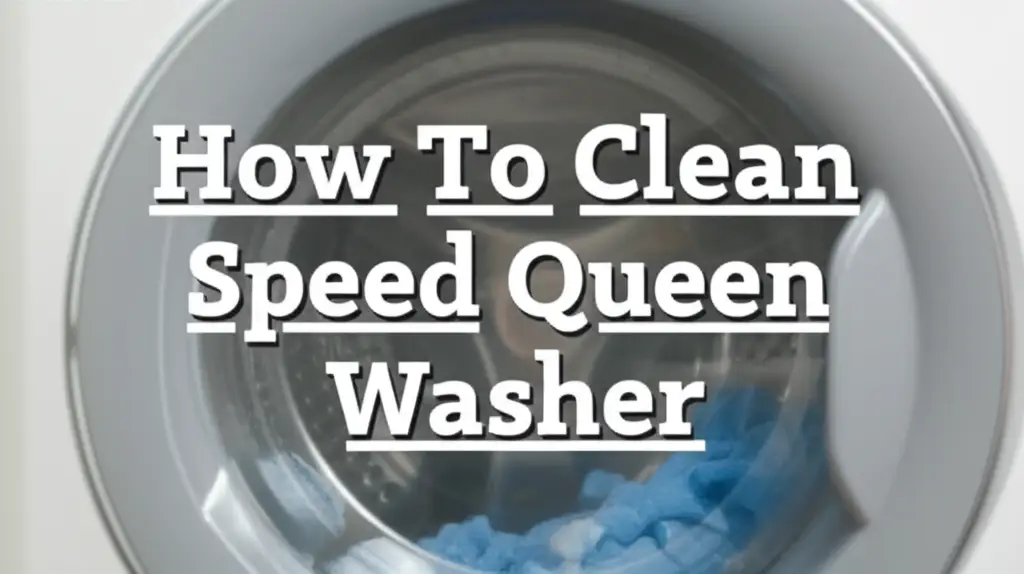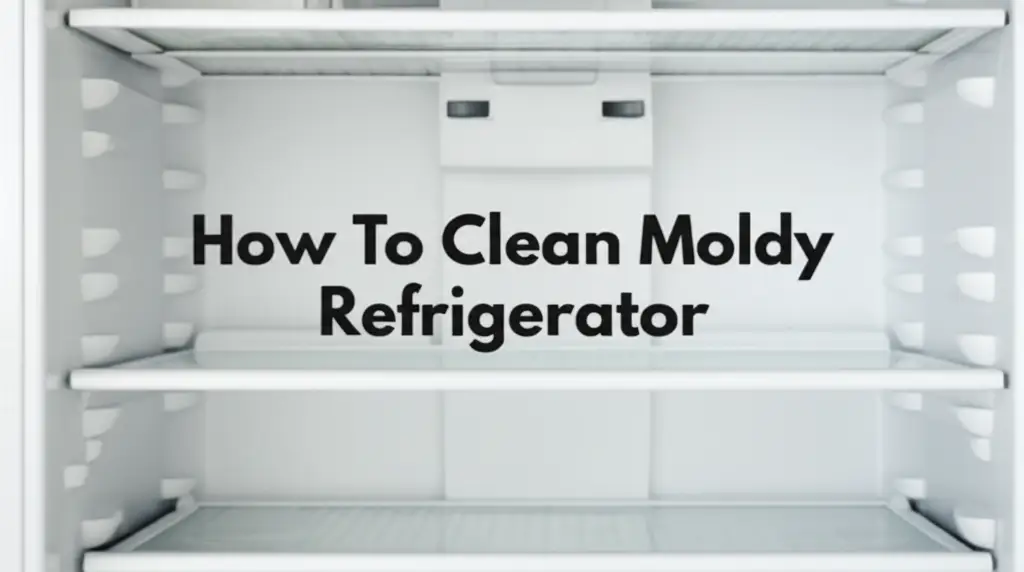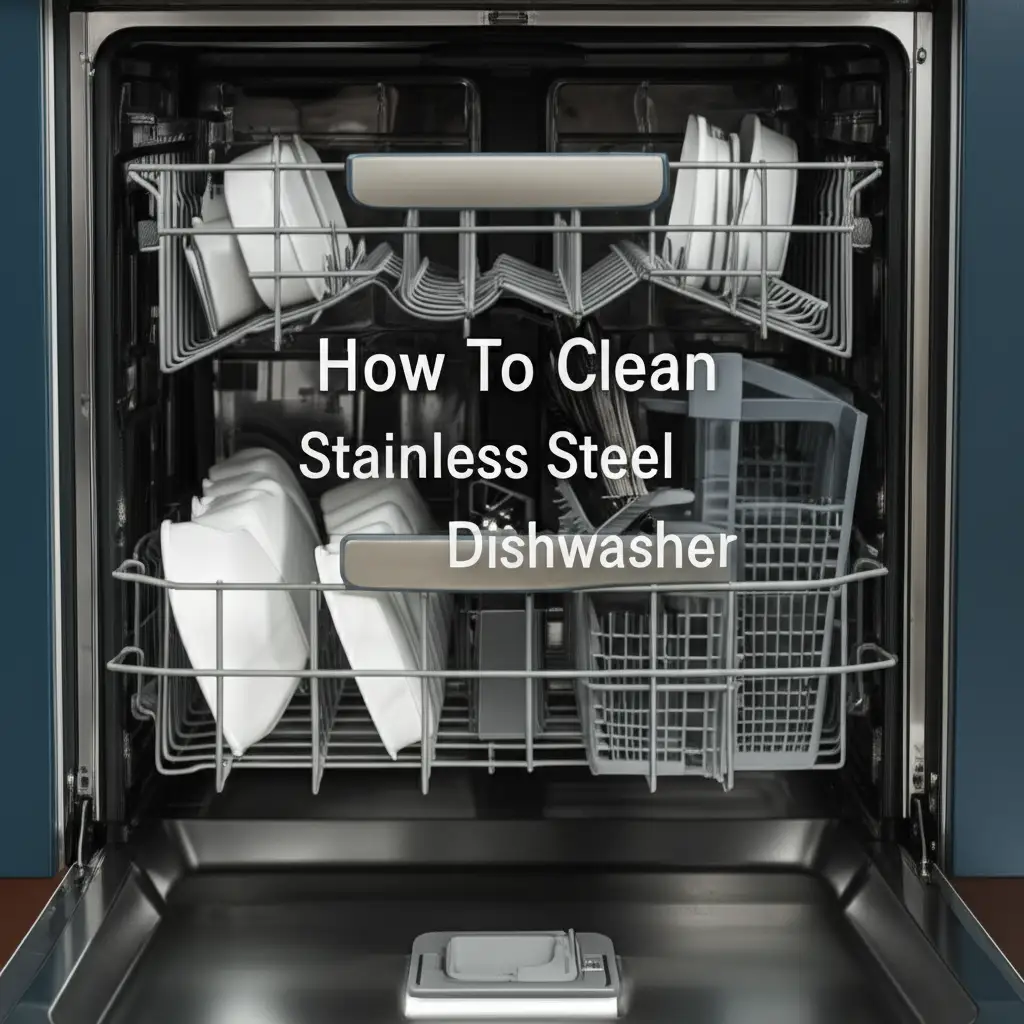· Appliance Care · 15 min read
How To Clean Washing Machine With Bleach

Revitalize Your Washer: How to Clean a Washing Machine with Bleach
Have you noticed a musty smell from your laundry, even after washing it? The problem might not be your clothes. Your washing machine itself could be dirty. Over time, residue from detergent, fabric softener, dirt, and even mold can build up inside your machine. This buildup leads to unpleasant odors and can affect how clean your clothes get. I have found that a simple yet powerful solution is to clean your washing machine with bleach.
Bleach is a strong disinfectant. It kills bacteria, mold, and mildew effectively. Cleaning your machine regularly with bleach helps keep it fresh and ensures your laundry truly gets clean. This article will guide you through the process step-by-step. We will cover safety precautions, specific instructions for both top-loader and front-loader machines, and tips for maintaining a clean washer. Let’s make your washing machine sparkle and your laundry smell fresh again.
Takeaway
To effectively clean your washing machine with bleach:
- Always use rubber gloves and ensure good ventilation.
- Run a hot water cycle with bleach in an empty machine.
- Clean dispenser drawers, gaskets, and other accessible parts manually.
- Rinse the machine thoroughly with a plain water cycle afterward.
- Clean your washing machine with bleach every 1-3 months for optimal freshness.
Cleaning your washing machine with bleach involves running an empty hot water cycle with a measured amount of bleach, followed by a rinse cycle. You will also manually clean accessible areas like the detergent dispenser, door seal, and drum interior with a bleach solution. This process disinfects the machine, removes odors, and prevents mold growth, ensuring cleaner clothes.
Why Your Washing Machine Needs a Bleach Clean: Tackling Odors and Residue
Your washing machine works hard to clean your clothes, but it can get dirty itself. Detergent, fabric softener, and hard water minerals leave behind residue. This residue builds up over time inside the drum, hoses, and dispenser. A damp, dark environment, like the inside of a washing machine, is perfect for mold and mildew growth. These growths cause the unpleasant, musty odors you might notice.
Bleach is an excellent cleaner for washing machines because it is a powerful disinfectant. It kills bacteria, mold, and mildew spores effectively. This eliminates the source of bad smells, rather than just masking them. Regular use of bleach helps prevent these issues from developing. It ensures your machine remains sanitary and your clothes come out truly fresh. Using bleach extends the life of your machine by preventing corrosive buildup from spreading.
I know the importance of keeping every part of my home clean, especially appliances that deal with water. A clean washing machine is essential for clean clothes. If your machine smells, your clothes will too. Bleach also helps break down soap scum and other deposits. This keeps the machine’s components running smoothly. You will notice a big difference in how your laundry smells and feels.
Consider bleach as a key part of your routine appliance maintenance. While other cleaners might remove some dirt, bleach offers strong sanitization. It tackles hidden germs and ensures a deep clean. This simple step can greatly improve your laundry experience. You get cleaner clothes and a fresher home environment.
Safety First: Essential Precautions When Using Bleach
Bleach is a powerful cleaning agent. It requires careful handling to ensure your safety and protect your machine. Always read the product label before you start cleaning. The label provides specific instructions for safe use and dilution ratios. Taking these precautions helps prevent accidents and damage.
First, always work in a well-ventilated area. Open windows and doors in your laundry room. This helps disperse any fumes that bleach may produce. Breathing in bleach fumes can cause respiratory irritation. Good airflow is key to a safe cleaning experience.
Wear protective gear. I always put on rubber gloves before touching bleach. This prevents skin irritation and chemical burns. You might also consider wearing eye protection, like safety glasses. Bleach splashes can harm your eyes. Protecting yourself is the most important step.
Never mix bleach with other cleaning products, especially ammonia or vinegar. Mixing bleach with ammonia creates highly toxic chlorine gas. Mixing bleach with vinegar also produces harmful fumes. If you plan to use vinegar or baking soda for other cleaning tasks, do them at a separate time. For example, if you clean your washing machine with baking soda and vinegar, do it on a different day than your bleach cleaning.
Lastly, never use more bleach than recommended. More bleach does not mean a cleaner machine. Excess bleach can damage rubber seals and other components over time. It can also leave residue in your machine that might bleach your clothes in a later cycle. Always measure carefully and follow the instructions. Using the right amount is important for safety and effectiveness.
Step-by-Step Guide: Cleaning a Top-Loader Washing Machine with Bleach
Cleaning a top-loader washing machine with bleach is straightforward. This method disinfects the drum and internal components. Make sure your machine is empty before you begin. You do not want any clothes in the washer during this process.
First, pour about 2 cups of liquid chlorine bleach directly into the washing machine drum. Do not pour it into the detergent dispenser. Some machines have a bleach dispenser. If yours does, use that one. Otherwise, add it directly to the drum.
Next, set your washing machine to the hottest water setting available. Choose the largest load size option. Select a heavy-duty or sanitize cycle if your machine has one. If not, a regular wash cycle will work fine. Start the cycle. Let the machine fill with water and agitate for a few minutes. This mixes the bleach throughout the water.
After a few minutes, pause the cycle. Let the bleach solution sit in the tub for at least 30 minutes, or even up to an hour. This soak time allows the bleach to thoroughly disinfect the drum and break down any buildup. It is especially effective at killing mold and mildew. If you have visible mold, this soak is very important. For help with persistent mold, you can review how to clean mold from your washing machine.
Once the soaking time is complete, resume the wash cycle. Let the cycle complete fully. After the wash cycle finishes, run a second, empty cycle using only hot water. This rinse cycle removes any remaining bleach residue. It prevents your clothes from getting bleached in the next load. I always do this to be safe. This simple process keeps your top-loader fresh and clean.
Step-by-Step Guide: Cleaning a Front-Loader Washing Machine with Bleach
Front-loader washing machines are known for their efficiency, but they can easily trap moisture. This makes them prone to mold and mildew buildup, especially around the door gasket. Cleaning a front-loader with bleach is a crucial maintenance task. Ensure the machine is completely empty before you start.
First, add about ½ to 1 cup of liquid chlorine bleach to the main detergent dispenser. Do not put it in the fabric softener dispenser. Some machines have a dedicated bleach dispenser. Use that one if available. Check your machine’s manual for the exact location if you are unsure.
Next, set your washing machine to the hottest water setting. Select the “Sanitize” or “Clean Washer” cycle if your machine has one. If not, choose the hottest, longest wash cycle available. Start the cycle. This cycle is designed to use high heat and often has extra rinse steps. It allows the bleach to circulate through the drum and internal components.
During the cycle, pay attention to the rubber gasket around the door. This area commonly collects water and residue, leading to mold. The bleach cycle will help, but manual cleaning is often needed here too. After the cycle finishes, immediately wipe down the gasket and door interior. You can use a cloth dampened with a mild bleach solution (1 part bleach to 10 parts water) for this. Cleaning the rubber gasket in a washing machine is vital for preventing odors.
Finally, run a second, empty wash cycle using only hot water. This extra rinse ensures all bleach residue is gone. It prevents future laundry from being damaged by bleach. After the rinse, leave the washing machine door ajar for a few hours. This allows the drum and gasket to air dry completely. Air drying is a simple but effective step to prevent new mold growth.
Targeting Specific Areas: Dispenser, Gasket, and Drum
While running a bleach cycle cleans the main parts of your washing machine, certain areas need extra attention. These spots are prone to stubborn buildup of detergent, fabric softener, and mold. Giving them a targeted clean will greatly improve your machine’s freshness. I always focus on these areas to ensure a truly thorough cleaning.
The detergent and fabric softener dispenser drawers are common culprits for gunk buildup. Residue hardens in these compartments, making them less effective and promoting mold growth. Remove these drawers if they are removable. Soak them in a solution of warm water and a small amount of bleach (about 1 tablespoon of bleach per gallon of water). Use an old toothbrush or a small brush to scrub away the grime. Rinse them thoroughly before putting them back. You might find more specific tips on how to clean your softener dispenser in your washing machine helpful here.
For front-loaders, the rubber gasket around the door is a notorious spot for mold and mildew. After running the bleach cycle, carefully pull back the folds of the gasket. You will likely see dark spots or slimy residue. Use a cloth dampened with the same mild bleach solution (1 part bleach to 10 parts water) to wipe down the entire gasket. Be thorough. This helps prevent future mold growth and keeps odors at bay. After wiping, leave the door open to air dry the gasket completely. This is a critical step I never skip.
Even after a bleach cycle, sometimes the drum itself might have small spots or residue. Use a cloth dipped in the mild bleach solution to wipe down the interior surfaces of the drum. Pay attention to any crevices or seams. For top-loaders, reach down into the drum and wipe around the agitator, if your machine has one. Cleaning the agitator in your washing machine ensures no hidden grime remains. This manual attention ensures no spot is missed, leaving your washing machine truly sparkling clean.
Maintaining Freshness: How Often to Clean with Bleach
Regular cleaning is key to keeping your washing machine fresh and odor-free. The frequency of cleaning with bleach depends on your usage habits and water quality. For most households, I recommend cleaning your washing machine with bleach every one to three months. This schedule helps prevent the buildup of mold, mildew, and detergent residue. It keeps your machine smelling fresh.
If you do a lot of laundry, especially heavily soiled items, you might need to clean your machine more often. People who use cold water frequently or use a lot of liquid detergent may also experience faster buildup. Cold water does not dissolve detergent as thoroughly as hot water. This can leave more residue behind. In these cases, a monthly bleach cleaning cycle could be beneficial.
Conversely, if you live alone and do laundry less often, you might extend the cleaning interval to every three months. Observe your machine. If you start to notice any musty smells or see visible residue, it is a clear sign that a cleaning is overdue. Do not wait for the odors to become strong.
Between bleach cleanings, you can take simple steps to maintain freshness. Always remove wet laundry immediately after the cycle finishes. Leaving damp clothes in the machine creates a perfect environment for mold growth. After each wash, wipe down the inside of the door and the rubber gasket. Leave the door and detergent drawer slightly ajar between washes. This allows air to circulate and the interior to dry out completely.
Remember that bleach is a strong disinfectant. While effective, it might not be the only cleaner you use. Some people alternate between bleach cleanings and other methods, such as cleaning with baking soda and vinegar. This can be a good strategy to tackle different types of buildup. However, for deep sanitization, bleach remains a top choice.
Troubleshooting Common Bleach Cleaning Issues
Sometimes, even after a bleach clean, you might encounter issues. Do not worry; most problems have simple solutions. Addressing these common concerns ensures your washing machine stays in top condition. I have faced a few of these myself, and finding the right fix makes a big difference.
A persistent musty smell is the most common issue. If your washing machine still smells after a bleach cycle, it likely means some mold or residue remains. This often happens in hard-to-reach areas. Re-run the bleach cycle, but this time, pause the cycle for a longer soak, perhaps an hour or two. Manually clean all accessible areas thoroughly again. Pay extra attention to the detergent dispenser and the rubber gasket. Mold can hide deep within the gasket folds. For front-loaders, keeping the door ajar after every wash is crucial to prevent future mold.
Another issue could be bleach streaks or residue on your clothes after cleaning the machine. This means not all the bleach was rinsed away. The solution is simple: run an extra rinse cycle or two with plain hot water. Always ensure your final cycle is just water to flush out any remaining bleach. You can also wipe down the drum with a damp cloth after the cleaning cycle is complete, just to be sure.
If you notice damage to rubber seals or plastic parts, it could be from using too much bleach or using it too frequently. Always measure bleach accurately. Avoid using abrasive scrubbers on delicate parts. If damage is significant, contact a professional for repairs. Using the correct amount, as instructed, prevents this.
For top-loaders, some users wonder about cleaning the water inlet valve on their washing machine. While a bleach cycle mainly cleans the drum, if you suspect hard water buildup or sediment in the inlet valve affecting water flow, that requires a separate, targeted cleaning method. Bleach will not directly address an obstructed inlet valve.
Lastly, some people worry about using bleach on new or high-efficiency machines. Most modern washing machines are designed to handle bleach. However, always check your washing machine’s user manual. It will confirm if bleach is safe for your specific model and provide any special instructions. Following the manufacturer’s guidance is always the best approach.
Frequently Asked Questions (FAQ)
Q1: How often should I clean my washing machine with bleach? A1: I recommend cleaning your washing machine with bleach every 1 to 3 months. If you do laundry frequently, use cold water often, or notice persistent odors, you may need to clean it monthly. Regular cleaning prevents mold and detergent buildup, keeping your machine fresh and efficient.
Q2: Can I use bleach in my high-efficiency (HE) washing machine? A2: Yes, most HE washing machines are designed to handle bleach. Always check your machine’s user manual for specific instructions and recommended bleach amounts. HE machines often have a dedicated bleach dispenser, which is important to use correctly.
Q3: What if my washing machine still smells after cleaning with bleach? A3: If a musty smell persists, mold or residue might be hidden in hard-to-reach areas. Re-run the bleach cycle with a longer soak time. Manually clean the detergent dispenser, fabric softener dispenser, and especially the rubber gasket thoroughly. Leaving the door open after each wash helps air dry the interior.
Q4: Can I use color-safe bleach to clean my washing machine? A4: No, color-safe bleach (oxygen bleach) is not the same as chlorine bleach. Chlorine bleach is a powerful disinfectant effective at killing mold, mildew, and bacteria. Color-safe bleach is designed for laundry and does not have the same sanitizing properties for deep machine cleaning. Stick to liquid chlorine bleach.
Q5: Is it safe to mix bleach with other cleaners like vinegar or baking soda? A5: Never mix bleach with other cleaning products, especially ammonia or vinegar. Mixing bleach with these chemicals can create toxic gases that are dangerous to inhale. Always use bleach alone when cleaning your washing machine to ensure safety.
Q6: What should I do if bleach gets on my clothes during the wash cycle after cleaning? A6: This means some bleach residue remained in the machine. Immediately re-run an empty cycle with hot water to thoroughly rinse the drum. You can also wipe down the drum interior with a damp cloth. This prevents bleach from transferring to your laundry.
Conclusion
Cleaning your washing machine with bleach is a simple yet powerful way to maintain its freshness and ensure your laundry comes out truly clean. We have covered why this process is important, from tackling stubborn odors to preventing mold and mildew growth. Following the step-by-step guides for both top-loader and front-loader machines ensures you address all critical areas effectively. Remember to always prioritize safety by ensuring good ventilation and wearing protective gear when handling bleach. Never mix bleach with other cleaners.
Beyond the main bleach cycle, focusing on specific parts like the detergent dispenser, fabric softener dispenser, and especially the rubber gasket in front-loaders, makes a huge difference. Regular maintenance, such as cleaning every 1 to 3 months and leaving the door ajar between washes, will keep your machine in top condition. By integrating these cleaning habits, you will extend the life of your appliance and enjoy consistently fresh-smelling laundry. Take control of your home’s cleanliness today. Start a routine to clean your washing machine with bleach. Your clothes, and your nose, will thank you!
- washing machine cleaning
- bleach cleaning
- laundry care
- appliance maintenance
- smelly washing machine
- mold removal




